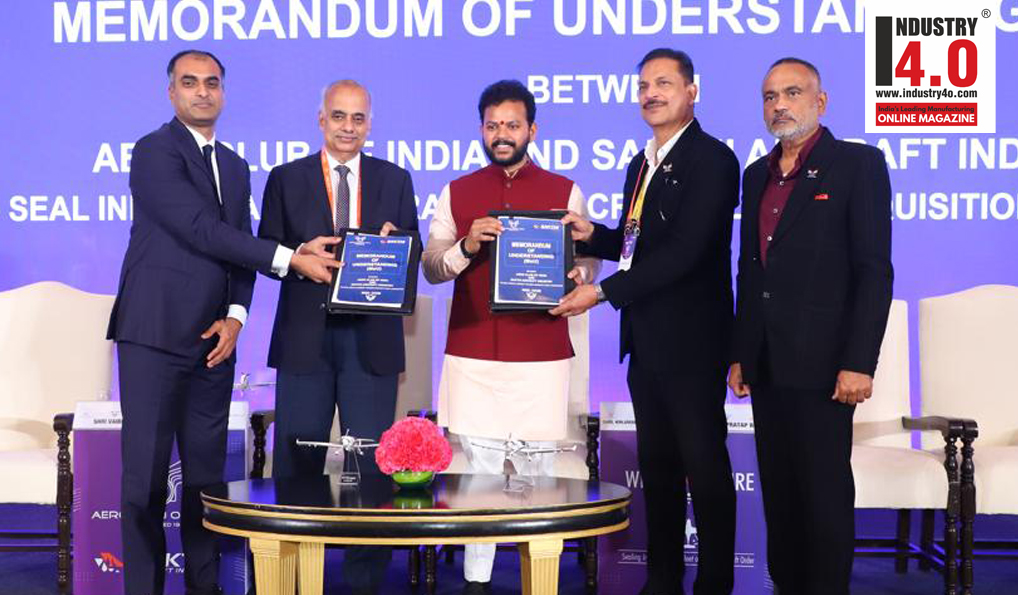The editorial team at www.industry4o.com, spoke to experts and leaders across manufacturing to identify methods to help small manufacturers get past the crisis. The old school of putting it on a white board all the ideas that came in and then using available data along with economic indicator was the basis of this article. Our focus was to identify what will work and what will not. Ideas from around the world and hyperlocal solution is what we needed to find. Remember we are in this together.
Facts first: The manufacturing sector in a precarious position
Manufacturing sector performance is vitally essential to any nation’s overall economic growth. The pandemic COVID-19 struck manufacturers in an unforeseen and unexpected manner. It is the first time in the history of manufacturing that this deadly virus has impacted demand, supply and labour availability globally at the same time.
The prolonged lockdown triggered by COVID-19 resulted in a terrible impact on the manufacturing sector, which contributes nearly 20% of GDP. The shutdown has closed the economy with the shutters and is also impacting many people’s livelihoods.
The production units have already substantial losses. The livelihoods of those involved with the businesses are at stake with it. During this turbulent period, 90% of the workers have returned to their native countries, leaving factories in the lurch. The migration of jobs has come as a double whammy to many COVID – 19 hit Indian sectors already reeling under a slowing economy.
Therefore, the automobile industry plays a critical role in economic development. However, the Coronavirus has shaken the automotive industry very badly too.
How to forge ahead in the face of COVID-19?
The manufacturing sector needs to think about long-term plans and accordingly shape its business model. Cash flow and working capital are probably the most pressing issues on the minds of producers. Many from this industry understand that COVID-19 is a wake-up call to alter and develop various aspects of manufacturing processes. For industries that were technologically under-prepared, this pandemic came like a bolt from the blue for the manufacturing sector.
Technology is the cornerstone of the manufacturing sector that is looking to thrive in the post-COVID era. Digitization is no more an alternative strategy; in a situation where physical encounters appear to be incredibly restricted and remote access to anything would be the order of the day, it has become a vital necessity.
The conventional market, will not be possible for a long time, so comprehensive e-marketplaces will become a vital way for manufacturers to reach out to promising customers, suppliers and lenders to expand their business.
At the World Economic Forum meeting held in Switzerland attended by the leaders of global different industries, the following five imperatives emerged and they are expected to contribute to long-term business success:
- Rapid customization of production and supply processes to alter customer behaviour.
- Responsive manufacturing and supply system empowered by advanced technologies.
- Coordination of the logistics around and inside global value chains.
- Adopting new ways of operating and governing to improve resilience in manufacturing.
- Shared responsibility and cooperation between businesses and authorities in tackling social and environmental challenges.
Manufacturers should embrace technology
Manufacturers should consider refurbishing equipment, innovations, and approaches that empower the future-generation workforce, new business models that comprise technology alliances, robotics, AI and digital infrastructure, 3D printing that supports expanded capabilities and business efficiency.
Citing a few examples: real-time awareness of the availability of raw materials, finished products, WIP, people, properties and capacity; use of Artificial Intelligence and Machine Learning to continuously monitor and reschedule activities; 3D printing of replacement parts that were trapped in the supply chain as well as the use of AGVs (Automatic Guided Vehicles), autonomous electric vehicles, and drones will further reduce people’s dependency and support social distance.
Robotic process automation to enable non-value adds labour-intensive activities; the use of mobile devices; the use of mobile devices, Augmented Reality and Virtual Reality to make it easier for workers to perform jobs for which they have not been trained.
The integration of technologies such as AI, IoT, and robotics can have substantial effects on efficiency and business. Using robots leads to improved performance, lower costs and greater flexibility in production. Industry 4.0 should accomplish these objectives and many of its technologies could have significantly minimized the burden of this on all of us. More remote working and virtual work could also have been enabled by the same technology to deal with the problem of lockout, self-isolation and social distancing.
Manufacturing should up its ante on R & D spend
Research and development benefits may seem fairly obvious. Many manufacturers still choose to skip this stage to save money.
It is high time to realize India’s task of overhauling legislation and encourage businesses to put money into research and innovation. India’s R & D investment expenditure amounts to 0.7 % of GDP, a fraction of China’s 2.1 %, let alone 3.1 % of Japan’s.
The Indian manufacturing sector needs to make sure that the product is fit for purpose and only half of the R & D process makes the production methods viable.
Sometimes, you could also find a way to develop the quality and at the same time reducing costs. In a competitive market, you would have a greater chancing of winning and will shield your business from losses if your product fails to meet safety requirements.
Let’s look at why the R & D is essential for the manufacturing sector
- R & D: R & D will lead to new products, more innovative ideas and processes that could turn into value for the business over time. You have an opportunity to prove that yours is an innovative business by investing in a new research and development project.
- Market Trends: A further benefit is the opportunity to remain active and to keep up with current trends. You may initially design a product in a certain way but at the time of R&D, an emerging trend may take the product in a different direction. An organization needs to remain up to date to thrive in the market. Investing time and resources into R & D is a win-win scenario. Companies may make significant changes to a product while rising profit margins and keeping in line with consumer trends could be different.
- Efficiency: Businesses sometimes ignore the fact that investing in research and development will increase production quality. Through the R & D method, you could find that you could enhance a product’s skills or manufacturing process efficiency.
- Cost Management: In addition to improving productivity and creativity, R&D may also help in finding opportunities to cut costs. By experimenting with various products, prototypes and manufacturing methods, you might be effective in lowering the overall production costs.
Conclusion: India needs to capitalize on foreign companies’ plans to start their units in the country. If India’s manufacturing economy is to hit $ 1 trillion by 2025, it will be essential for manufacturing units to turn into smart production units. Also, there is a significant rise in day-to-day working capital. As such to reduce the cost of production it becomes a compelling need for the manufacturing sector to enhance its production system and implement new technology.
Editorial team of INDUSTRY 4.0 can be contacted at [email protected]









